27 Types of Moss That Can Make Your Garden Magical
Author: Jen Worst | Editor: Omar Alonso
Review & Research: Jen Worst & Chris Miller
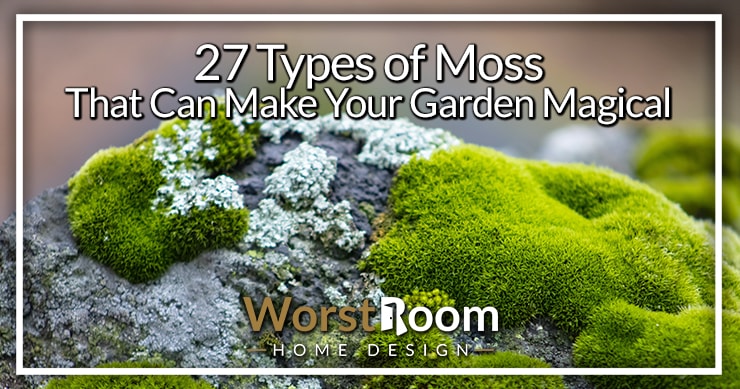
There are so many different types of moss species that you can use in your garden and lawn that you could spend forever trying to sort it out. But the choice can be narrowed down quickly based on what can thrive well in your region.
Moss is a flowerless plant that's usually found in moist shady locations all over the world. They're primitive plants and hundreds of moss species have been identified, even from fossils that are almost 95 million years old!
There are over 20,000 species around the world, but we're going to focus on the 27 most common types of moss, which are the easiest to cultivate and keep healthy while looking magical.
27 Types of Moss
Moss is the main constituent of peat and is also used for decorative purposes in gardens and by florists. For instance, moss lawns are typical constituents of Japanese gardens. Let's see which of these common types of moss you might add to your own types of gardens.
1) American Tree Moss
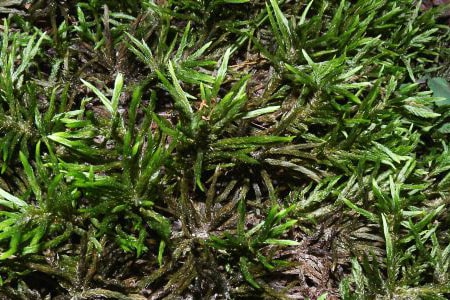
Scientific name: Climacium americanum
This type got its name because it resembles small evergreen trees. When clumped together this moss looks like a miniature forest. They're commonly found in damp, shady places in the Northern Hemisphere.
They produce new shoots annually from the horizontal stems growing on the soil’s surface. They grow to be about two to four inches high.
2) Common Haircap Moss
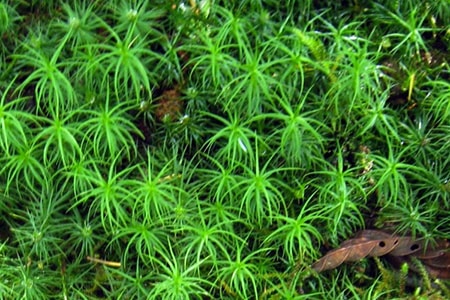
Scientific name: Polytrichum commune
This type is also called "great golden maidenhair", "great goldilocks", and "common hair moss". They're found in regions with high humidity and rainfall.
The stems can be up to 12 inches long, which is quite tall for a moss. They have tough, wiry shoots and dark green narrow spearhead-shaped leaves that turn brown with age.
3) Spoon-Leaved Moss
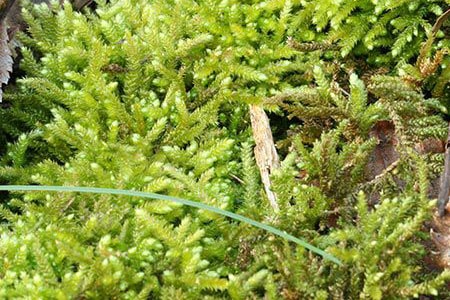
Scientific name: Bryoandersonia illecebra
This type usually grows on soil near flat, low-lying, seasonally wet areas. They can also grow on rocks or tree bases. Their foliage is shiny green to greenish yellow-brown in color.
They're found only in eastern North America and are classified as a critically imperiled species. In Canada, they're protected under the federal Species at Risk Act.
4) Square Goose Neck Moss
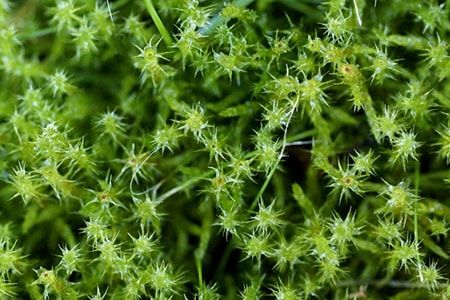
Scientific name: Rhytidiadelphus squarrosus
This moss, which has a distinctive red stem, is also known as "Springy Turf Moss". They're found in the Northern as well as the Southern Hemisphere. You find this moss in lawns very frequently.
They tolerate many soil conditions and are commonly found in man-made habitats like lawns and golf courses. It's one of the more common moss types in the United States.
5) Heath Star Moss
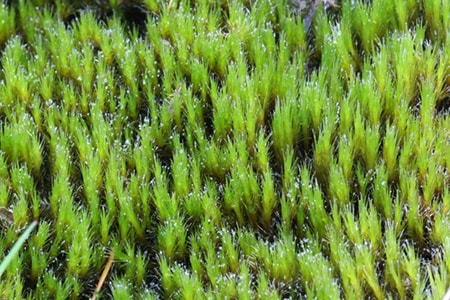
Scientific name: Campylopus introflexus
This moss is native to South America and is characterized by dark red-brown stems and bright green foliage that blacken with age.
They grow on rotting wood, shingle and thatched roofs and even on mining deposits. They're commonly found in decalcified habitats like bogs and dunes.
6) Baby Tooth Moss
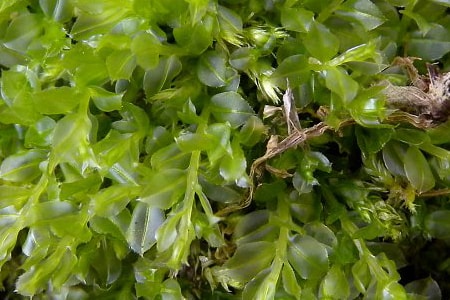
Scientific name: Plagiomnium cuspidatum
This type is also known as "Woodsy Thyme-Moss" and "Toothed Plagiomnium Moss". They're commonly found in North America, Africa, and Asia.
They have tall brownish-orange stalks with medium green foliage. They have a low tolerance for full sun and high temperatures, which might make them suitable for bonsai and other temperature controlled potted plants, but not for a lawn or garden.
7) Pincushion Moss
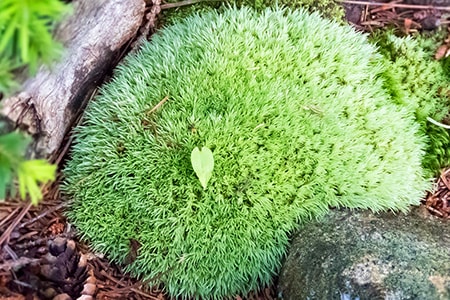
Scientific name: Leucobryum glaucum
This is a perennial moss that grows in the form of a large dome. It gets the name because these mounds look like pincushions used for sewing.
They have smooth and feathery foliage that is blueish-green in color. They're widely found in eastern North America and Europe.
8) Mood Moss
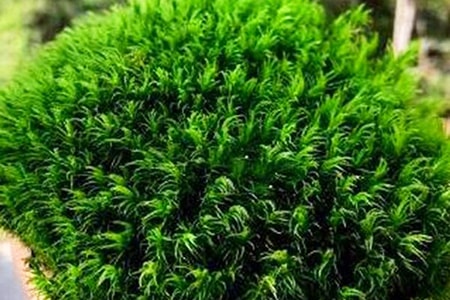
Scientific name: Dicranum scoparium
This variety is also known as "broom moss" or "broom fork moss" and is native to North America. It also grows in Europe, Asia, Australia, and New Zealand.
They're a robust and coarse variety characterized by shiny tufts and wooly stems.
9) Shiny Seductive Moss
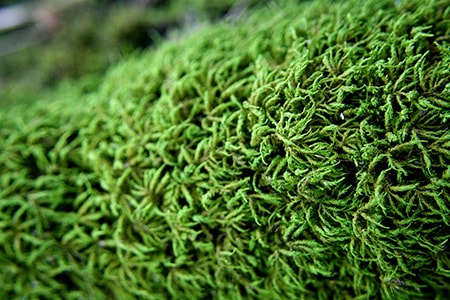
Scientific name: Entodon seductrix
It is also known as "shiny sexy moss" and "seductive entodon moss". They're a type of feather moss common in North America.
This type does well in full sunlight, unlike other moss species. They prefer growing on rotten wood.
10) Knight's Plume Moss
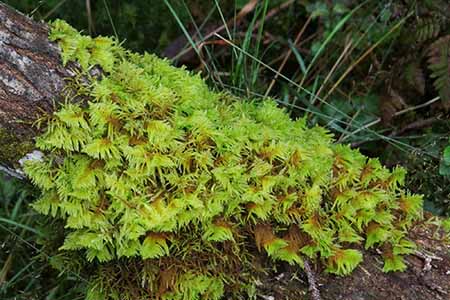
Scientific name: Ptilium crista-castrensis
This type of moss is also known as "plume moss" or "ostrich plume feather moss". It's usually found in Canadian boreal forests and also forests in Northern Europe.
They thrive in partial to full shade, in an area with moist, acidic soil. They're commonly used as a decorative plant because of their pretty feather-like appearance.
11) Ribbed Bog Moss
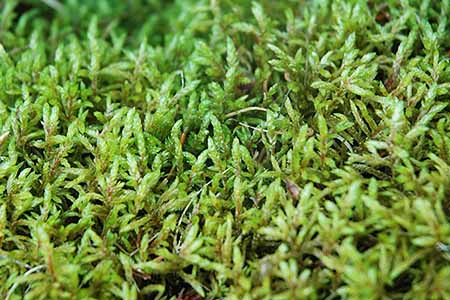
Scientific name: Aulacomnium palustre
This moss type is also known as "bog groove moss". They have yellow foliage that glows in certain lighting, hence, they also have the nickname “glow moss”.
They prefer boggy and wet soil and are widespread in Canada. However, they can be found across the world as they are also tolerant of a wide range of moisture levels, soil types, and climates.
12) Water Screw Moss
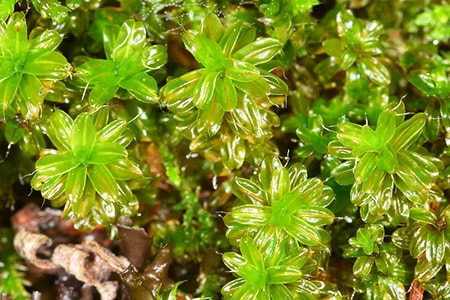
Scientific name: Syntrichia latifolia
This is a decorative looking moss which has small broad leaves arranged in circles around the stem. They commonly grow on trees, but they are also found on moist walls, rocks, and along the side of shaded roads.
They prefer sandy soil and gravel in a location with partial shade.
13) Glittering Wood Moss
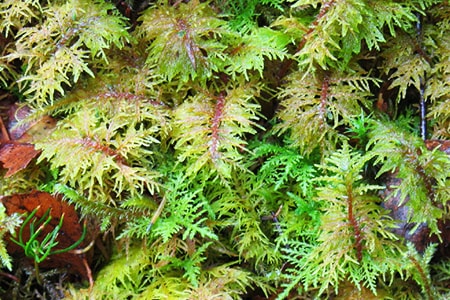
Scientific name: Hylocomium splendens
This moss is also known as "splendid feather moss", "stair step moss", and "mountain fern moss". They're widely found in the Northern Hemisphere—especially in cooler climates like Russia, Scotland, and Canada.
They grow well in acidic soil and humus and form carpets in woodlands, moors, and heaths. They're characterized by olive green, yellowish, or reddish glossy foliage that shimmers in certain lighting.
This decorative quality makes it an ideal addition in floral exhibits. They're also used for lining fruit and vegetable storage boxes.
14) Juniper Moss
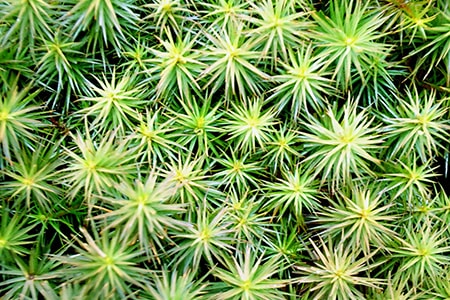
Scientific name: Polytrichum juniperinum
This moss is also known as "juniper haircap moss". They're an evergreen, perennial species that grows on every continent including even Antarctica.
They have reddish stems and gray-green leaves with a brown tip. They prefer dry, acidic soil. Unlike most types of moss, they're not a fan of moist environments.
15) Big Shaggy Moss
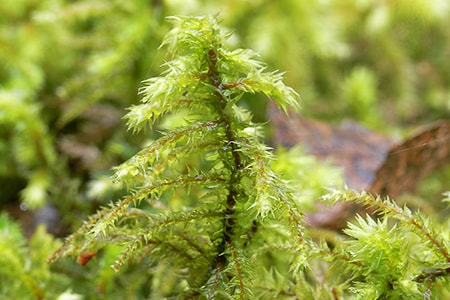
Scientific name: Rhytidiadelphus triquetrus
They're also known as "rough goose neck moss" or "electrified cat’s tail moss" because of the fuzzy unkempt appearance of the foliage.
They prefer moist fertile soil or humus and are commonly found in Pacific Midwest forests.
16) Lanky Moss
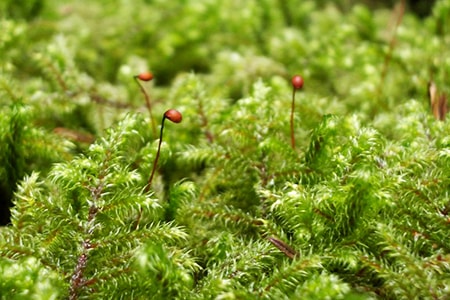
Scientific name: Rhytidiadelphus loreus
Lanky moss is a type of feather moss that commonly grows in North America, Canada, and Europe. They act as a nitrogen fixer by absorbing nitrogen and nutrients that rainwater washes downhill.
17) Common Tamarisk Moss
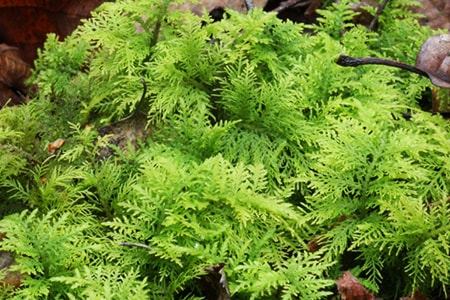
Scientific name: Thuidium tamariscinum
This moss is characterized by lacy fern-like foliage of a bright yellow-green hue. They grow well in heavy, clayey soil.
18) Catherine’s Moss
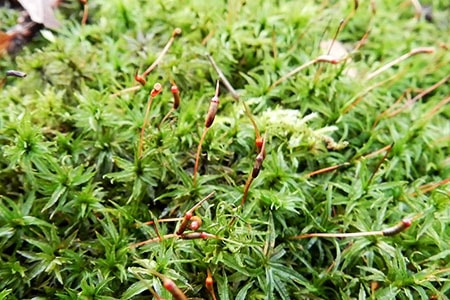
Scientific name: Atrichum undulatum
Catherine’s Moss is also known as "big star moss" because the growth pattern of the leaves looks like stars when viewed from above. They have bright green stiff foliage and prefer well-draining soil.
19) Dwarf Haircap Moss
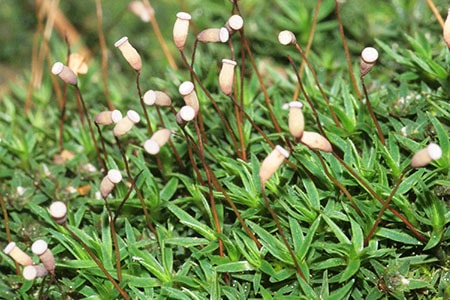
Scientific name: Pogonatum aloides
These types of moss are also known as "aloe haircap moss" because the foliage resembles that of some types of aloe plant due to its succulent appearance.
They have stubby red stems and stiff triangular foliage. They do well in sandy, acidic, and loose soil. At home, the difference between perlite vs. vermiculite won't matter to get a bunch started and transplanted outdoors.
20) Rigid Beard Moss
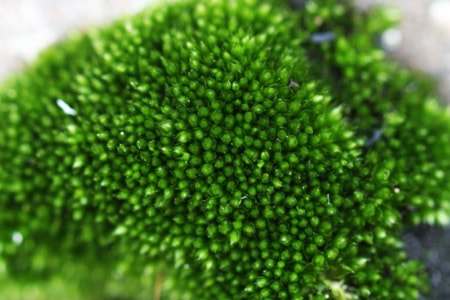
Scientific name: Didymodon rigidulus
These moss types have a distinct dark emerald green foliage. They grow in dense tufts and spread out like a carpet.
Although they prefer acidic soil, this is not a picky type—they grow on rocks in alpine regions and on the soil in grasslands.
21) Delicate Fern Moss
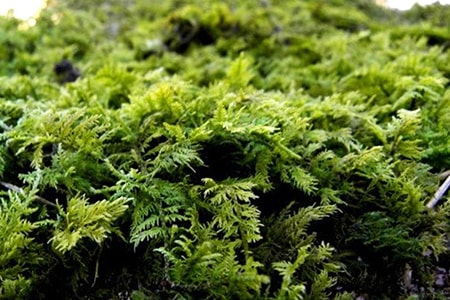
Scientific name: Thuidium delicatulum
These are also known as "common fern moss". This variety is commonly found in North and South America. The dried form of this moss is used in floral arrangements. It's one of the most common types of moss you see in stores.
22) Silky Forklet Moss
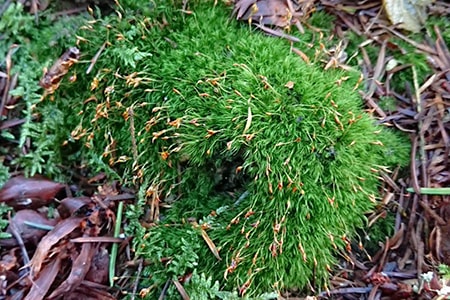
Scientific name: Dicranella heteromalla
This moss is characterized by long and narrow leaves. They have greenish-yellow foliage and commonly grow in woodlands, banks, ditches, or on tree stumps. They prefer acidic soil.
23) Swan’s Neck Thyme Moss
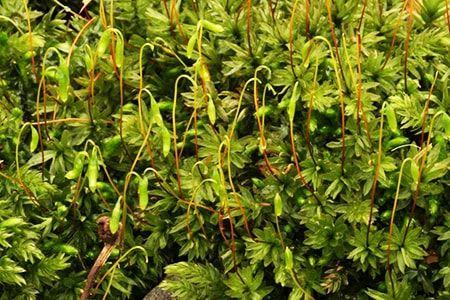
Scientific name: Mnium hornum
This moss is very commonly found in the United Kingdom and is native to Europe and eastern North America. They're characterized by lush dark green foliage that resembles fern leaves.
They prefer damp woodlands with acidic soil. They're usually ground mosses but they also grow on logs, rocks, tree bases, and along stream banks.
24) Fire Moss
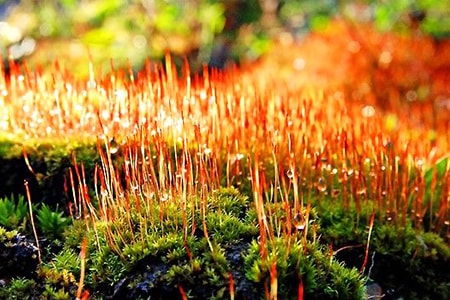
Scientific name: Ceratodon purpureus
These are also known as "redshank moss" and sometimes as "purple forkmoss". It has foliage which varies from yellowish-green to red. They grow well in dry, sandy soil.
They're found all over the world and are commonly found in urban and industrial environments that have been exposed to pollution.
25) Sand Beauty Moss
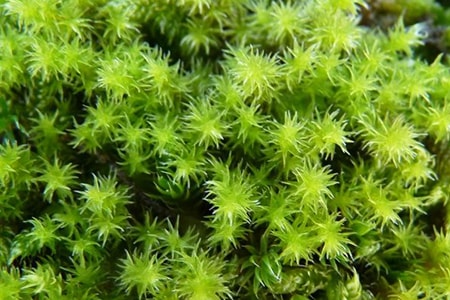
Scientific name: Racomitrium canescens
The sand beauty moss is also known as "hoary fringe moss". This type is drought tolerant, unlike other moss varieties. They have dull green foliage that turns grayish when dry.
26) Warnstorf’s Peat Moss
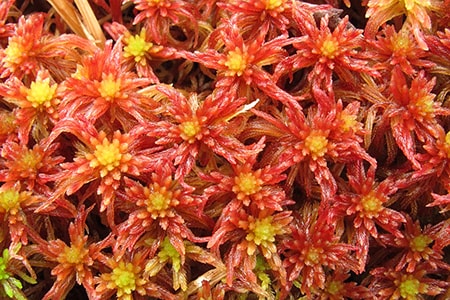
Scientific name: Sphagnum warnstorfii
A distinctive feature of this moss is its ability to change color based on the amount of sunlight received.
It has a dark purplish-red hue in the sun whereas it has a greenish hue when grown in the shade. This type prefers mineral-rich habitats.
27) Tousled Treasure Moss
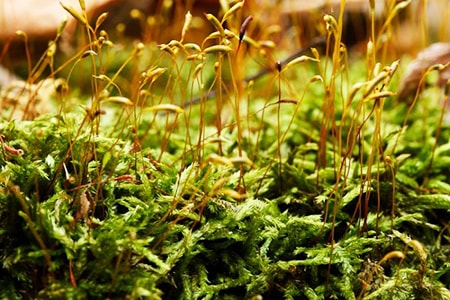
Scientific name: Callicladium haldanianum
This type of moss is also known as beautiful branch moss. It's characterized by its wispy foliage that changes color when exposed to the sun.
This moss type prefers partial shade. They can be used decoratively in rock gardens.
Which Types of Moss Do You Like?
Moss is a highly beneficial plant—it breaks down substrata and releases nutrients into the soil, reduces soil erosion, creates a micro-ecosystem for insects and invertebrates and much more.
Apart from its practical uses, moss is also used decoratively. Moss lawns have become an alternative to grass lawns (even more so than a chamomile lawn) because they consume less water and require less maintenance.
Try your hand at growing this versatile and easy-to-care-for plant. Any of the types of moss will do if you pay attention to their needs.



